#Versailles Rose Private Academy
Text
Dear Brother (Oniisama e…) LaserDisc scans and machine translations

These past few years I have fallen in love with the work of director Osamu Dezaki. Alongside Tomorrow’s Joe (Ashita no Joe), I hold Dear Brother in the highest regard.
It was a 1991 anime based on Riyoko Ikeda’s 1974 manga. You should watch the anime. It’s on Tubi for free. But really, just trust me. Buy the Blu-Ray from Discotek.


This anime came and went. There isn’t any merchandise besides some phone cards. Decaying fan sites and discourse is out there, but it’s a bit of a hunt.
Some time ago I saw a fan letter written by Hideaki Anno, apparently from the LaserDisc releases. From what I could tell, the LaserDisc packaging featured a treasure trove of notes from the staff that I just had to read. But I couldn’t find them!
If you’re not aware, LaserDiscs are one step above burnable trash in Japan — often on sale for 200 yen or less in heavy boxes shoved into the corner of second-hand anime stores. So I bought all five volumes of the 1993 Dear Brother LaserDisc release, was thrilled to notice unique letters from staff and industry luminaries in the interiors, and I scanned everything! And machine translated them.
I hope this (long, comprehensive) post brings fans of Dear Brother the same pleasure it brought me to compose it!
Note: I cannot read Japanese. I’ve used Google Lens for OCR, and GPT-4 for translation. My scans are good (and you can get them on Archive.org in high res) but these translations are not archive-quality and should not be depended on without verification. I’ve done my best to make corrections and have attempted to wrangle the correct tone and meaning out of the AI, but they’re essentially just for fun. Corrections of the most egregious stuff would be welcomed, email me: [email protected].
Volume One
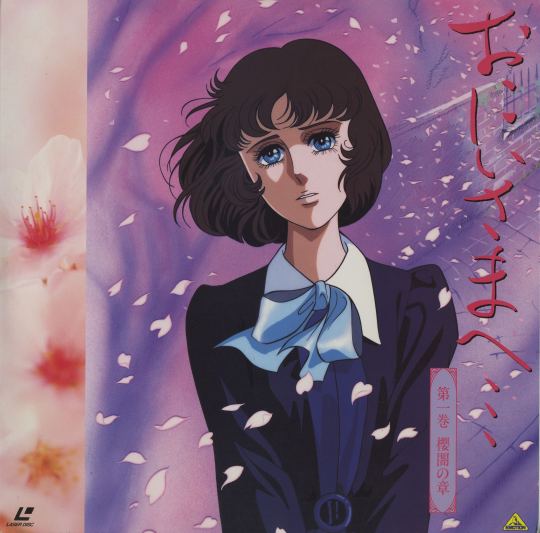
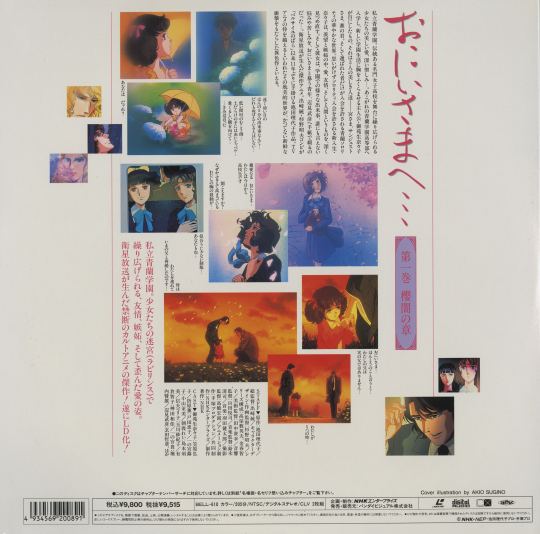
Each disc is themed after a character and colour. The back is peppered with screencaps and notable quotes (“Anata wa dare?” says little Nanako) as well as series credits. The two notable parts to translate are the disc synopsis, and the subheading (seen here in pink on the far left.) Maybe it’s a pull quote? Not really. So I called it a subheading.
Volume One Subheading
A forbidden cult anime masterpiece born of satellite broadcasting is finally available on LD.
Volume One Synopsis
Private Seiran Academy. A story of beautiful love and deep hatred unfolds at this prestigious all-girls high school steeped in tradition. The protagonist, Nanako Misonoo, who is thrilled to enroll in the high school division of her dream academy, encounters three stunning individuals: Miya-sama, Sanjust-sama, and Sho no Kimi. She also gets introduced to the glamorous world of Seiran Sorority, a society that only the chosen few are allowed to join. As a freshman granted unexpected membership in the Sorority, Nanako begins to take a deep look at love, friendship, and the essence of being human, all while being surrounded by envy and jealousy. She confides her various experiences at the academy, along with unspeakable worries and hardships, in letters to her elder “brother” and a young man named Takehiko Henmi… A masterpiece anime born of satellite broadcasting. It is a work by Riyoko Ikeda that the Dezaki-Sugino duo took on for the first time in 11 years since “The Rose of Versailles.” It is considered a unique work that brings a fresh, unprecedented shock by transcending the framework of TV anime with its aesthetic world.
The disc looks like this:

An “obi” (sash that covers the spine) is included. Of course, it says “My tears won’t stop!” in huge text, sells it as the latest Dezaki/Sugino collaboration, and describes it as tanibi na sekai — a poetic concept of a romantic, sublime world of aesthetic beauty.
There are two paper inserts in each volume. The first one looks like this, and is an index of LaserDisc chapter markers based not on plot developments, but notable character quotes.
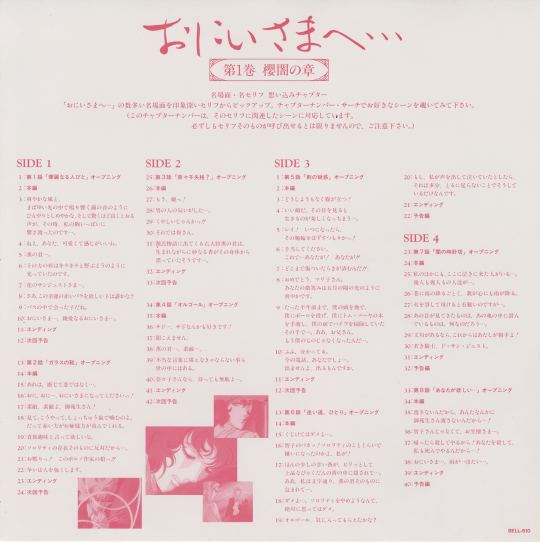
There’s also a form you can fill out to get a telephone card. Simply cut out a coupon from each volume to prove you bought the full set. Be quick, entries are due end of March 1994.
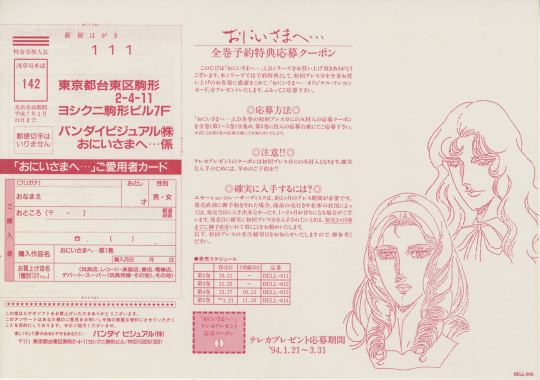
The interior is the best part. Here’s the spread for Volume One.

I haven’t translated episode synopses, but I’ve attempted to translate both the staff letter and the “letter to dear brother” from someone external to the production. There’s a bio for each author.
Volume One’s “From the staff to all the fans”
Bio:
Osamu Dezaki
Joined Mushi Production in 1963. After directing series like “Astro Boy” and “Goku’s Great Adventure,” he was selected as the general director for “Tomorrow’s Joe” in 1970 at the young age of 26. Born on November 18, 1943, and hailing from Tokyo, he has received high praise as a director. Subsequently, he has brought numerous masterpieces into the world, including “Aim for the Ace!”, “The Adventures of Ganba,” “Nobody’s Boy,” “Treasure Island,” “The Rose of Versailles,” “Space Adventure Cobra,” “BB,” and more. He is also referred to as “Sakimakura” and “Mataba Sakimakura.”
The letter:
This is my second time working on Ikeda-san’s work since “The Rose of Versailles.” Her works have a unique aroma, whether you call it a theme or a world. They seem to pursue the literary aspect of the story. When I read the original work of “Dear Brother,” I was very drawn to these aspects, and at the same time, I felt a sense of anticipation that it would be difficult, but perhaps various images could be created. It’s not just about being cool or intense; it’s about creating images that resonate more and more with people’s hearts.
Fundamentally, there is an original story, but when the characters start to move, and each begins to live, the story could go anywhere. I always had that sense of tension. So, rather than sticking to the original work, I placed more emphasis on the directorial focus of the reality of the characters who had started to move.
As for the techniques, it was not something I was particularly conscious of, but I used a lot of completely black shots simply because I honestly felt they needed to be black. Whether or not it was successful, I wanted to effectively overlap the visuals with the characters’ psychology by delivering such physiological shocks. The psychological fluctuations of the people are indeed the overall aroma of this work. How the audience perceives that aroma is something I want to leave up to each individual’s free sensitivity. - July 8, 1993, at Tezuka Pro
Volume One’s “Letter to Dear Brother”
Bio:
Mutsumi Inomata
Born on December 23 in Kanagawa Prefecture. After working with Ashi Production and Kaname Production, she is currently freelance.
After going through Ashi Production and Kaname Production, she is now a freelance artist. Mutsumi Inomata is her real name. She was born on December 23 in Kanagawa Prefecture. She is active in both the fields of anime character design and illustration. In the realm of animation, she served as the character designer and chief animation director for works such as “Plawres Sanshiro” and “Genmu Senki Leda,” and as the character designer for “Future GPX Cyber Formula.” As an illustrator, she has also provided numerous illustrations for novels, including titles like “Prince of the Universe,” “Dragon Quest,” and “Continent of the Wind.”
The letter:

Comics are way hard to translate without actually knowing Japanese. Here’s my best effort to uncover some meaning.
For several years, I had stopped watching anime and stuff… Living a hectic life, it’s been like this for a while now. Having a set day and a set time to watch a specific program (not just limited to anime), had become impossible for me. Recording videos is also a hassle, and first and foremost, I just don’t feel that “I must watch the next episode!” kind of emotion anymore.
Ah well, I was thinking maybe I’ve just become an adult.
Heh heh heh. I’m such an idiot.
No, that’s not it.
The blonde guy in the bottom-right is labeled as her friend, and she’s saying something about “Poupee-chan”. I think in the second panel he’s yelling saying “But that doll is supposed to be a girl!”
The final monologue starts with:
By the way, I have a container for “dangerous items” at the corner of my work desk. I keep things like cutter blades in it, so that I don’t accidentally drop them on the floor and cut myself or something.
The “dangerous items” container I’m using now has a sticker with Saint-Just-sama’s “Nanako’s Eyes,” heh heh heh ♡
That’s about all there is to note about Volume One, besides the fact it comes with an enormous poster (it’s the same art used on the cover of the Discotek Blu-Ray.)
Volume Two


Volume Two Subheading
Those eyes of that person, mysteriously and beautifully shining. Why these feelings? Why...? The increasing heartbeat, the endless tears of adolescence. A masterpiece of forbidden cult anime born from satellite broadcasting! The second installment on LaserDisc!
Volume Two Synopsis
Nanako’s life at school, after being chosen as a sorority member, was not all glitz and glamour. There were misunderstandings with her best friend Tomiko, and jealousy and slander from other students, including Misaki Aya. And then there was the obsessive love from her fellow sorority member, Nobuo Mariko. “What is a sorority? Is it really that important?” Nanako began to question the very existence of sororities. Yet, she tries to look straight into herself, even while confused. Always before her were the mysteriously beautiful and shining eyes of Saint-Just. Drawn to those eyes that seemed to peer into a distant past, Nanako attempts to uncover their secret. Then, by chance, she finds out about the special relationship between Fukiko and Saint-Just. Could it be that Miya-sama and Saint-Just-sama are…? The complicated interplay of relationships and the previously enigmatic characters start to become a little clearer in “Volume 2: The Chapter of Freezing Rain.” The subtle breaths of the people surrounding Nanako can be heard.

Volume Two’s “From the staff, Dear Nanako”
Bio:
Hideo Takayashiki
Born in 1947, native of Iwate Prefecture.
After passing through Osamu Tezuka’s Mushi Production, became a scenario writer.
Known for scripts of theatrical anime films such as “Hang in There, Tabuchi-kun!”, “Barefoot Gen”, and the “Phoenix” series. Also worked on numerous TV anime scripts like “Gutsy Frog”, “Gamba’s Adventure”, and “Tomorrow’s Joe”.
Additionally, wrote scripts for original videos and TV dramas like “The Laughing Target”, “One-Pound Gospel”, and has written many novels, actively contributing as a versatile scriptwriter.
Member of the Japan Broadcast Writers Association.
The letter:
Dear Nanako Misonoo,
How are you? How is university life?
It’s hard to believe that three years have passed since then. I was involved with you and those around you for just one year, but in retrospect, it was a very intense year.
In any case, I did something terrible to you. It may have been the extreme form of “bullying” in some sense.
My work as a scriptwriter involved probing and expanding the uncharted worlds between the frames of original works, constructing new narratives. In a sense, it was a painful job. And for you, it was excruciating. But now it’s a wonderful memory. I am filled with the feeling that I did some real work after a long time.
How is your best friend, Tomoko? What about Mariko? I assume Fuki is becoming more and more beautiful? Do you occasionally receive letters from Kaoru?
This summer marked the third anniversary of Saint-Just-sama’s passing. Thinking back, it was an unusually hot day. Your anguished form, waiting alone at the platform while listening to the chirping cicadas and the sound of the sea, is still etched in my memory.
I hear that there has not been a single day without flowers at the electric pole where Saint-Just-sama fell.
I am grateful for the chance to have met you and the people around you.
Autumn, 1993
Volume Two’s “Letter to Dear Brother”
Bio:
Kazuhiko Shimamoto
Born April 26, 1961
From the hinterland of Hokkaido
After being selected as an honorable mention in the 9th Shogakukan Newcomer Comics Award
Debuted with “Hissatsu no Transfer Student”.
His masterpieces include Gyakkyo Nine’ and Moeyo Pen. Examples include Flame Transfer Student’ and Kamen Rider ZO.”
The letter:
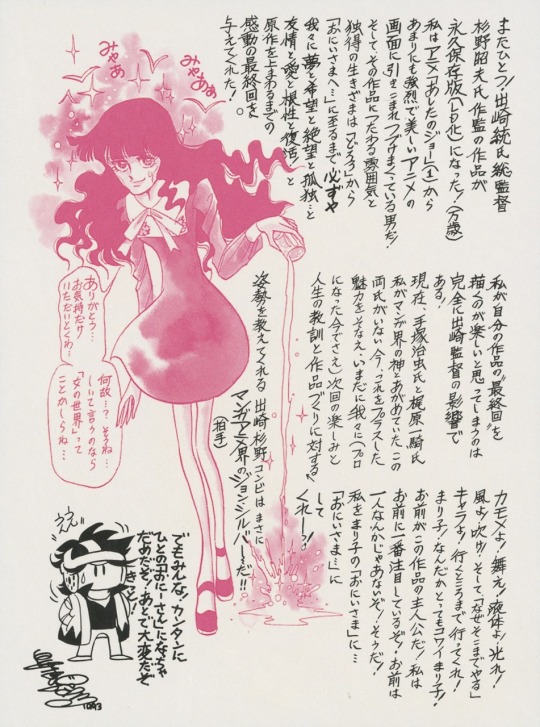
Another piece directed by Osamu Dezaki and supervised by Akio Sugino has become a permanent edition (converted to LaserDisc)! (Hooray!)
From the anime “Ashita no Joe” (1), the unique and beautiful way of life portrayed in anime is so intense that it has consistently given us dreams, hopes, despair, loneliness, friendship, love, perseverance, and revival! These works have even surpassed the original works in the emotional impact of their final episodes.
I continue to be captivated by the atmosphere conveyed by these works. The reason I enjoy drawing the final episodes of my own works is entirely due to Director Dezaki’s influence!
Currently, Osamu Tezuka and Ikki Kajiwara, the two individuals whom I revered as gods in the manga world, are no longer with us. Even now, these works, which possess added charm, continue to provide us (even those who have become professionals) with anticipation for the next episode, life lessons, and motivation for creating works.
Seagulls, dance! Liquids, shine!! Wind, blow and then, “Why go to such lengths?”
Charafo! Go as far as you can go! Mariko, somehow you’re really scary, Mariko.
Then the words scribbled next to the drawing of Mariko:
You are the protagonist of this work! I’m paying the most attention to you. You’re not alone! That’s right! Make me Mariko’s ‘older brother’… ‘older brother’…
Mariko is saying (OCR mangling here, sadly):
Thank you… I just feel… that’s special…
Why not? If I had to say, maybe it’s a ‘woman’s world’…
(Clearly a reference to Rikiishi Toru of Dezaki’s earlier anime Ashita no Joe, who intensely speaks of a “man’s world”. He and Mariko love a good starvation diet!)
The little chibi version of Shimamoto(?) in the bottom left is saying:
But everyone, don’t easily become someone’s ‘older brother.’ It’ll be troublesome later!
GPT-4 noticed a cute reference it couldn’t include in its translation. Its note:
The text seems to be OCR scanned partially, and hence some meanings might be missing or distorted, such as “マンガ界のジョン・シルバーだ!!”, which appears to compare Dezaki and Sugino to a ‘John Silver’ of the manga world.
Volume Three

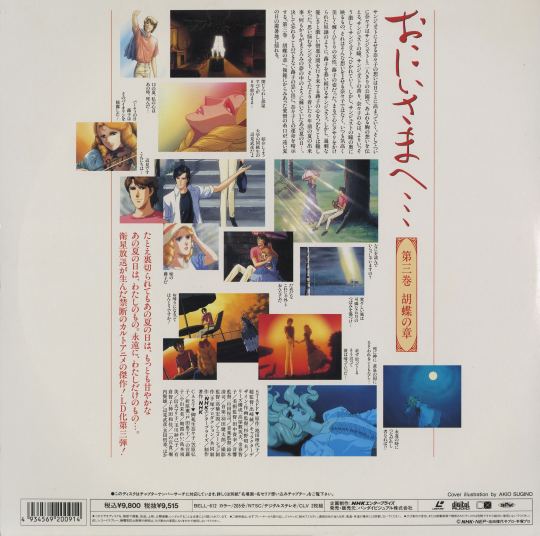
Volume Three Subheading
It’s not too late; our beautiful time can still be preserved, forever unspoiled, just like this white snow… A forbidden masterpiece of a cult anime born from satellite broadcasting! The fourth release on LD!
Volume Three Synopsis
Suddenly summoned to the sorority house, Nanako is pressured by Fukiko to end her relationship with Hemimi. Upon hearing this, Saint-Just confesses her complicated relationship with Fukiko. The shocking truth behind why “Miya-sama” wanted Nanako in the sorority unfolds, leaving her deeply shaken. Meanwhile, Saint-Just is tormented by the realization that the stronger her feelings for Fukiko, the more she ends up hurting her. The complex relationship between Saint-Just and Fukiko has a tragic past involving a near-suicidal event. On another front, Mariko causes an incident by attacking Misaki, motivated by slander about her parents’ divorce, which leads to a movement spearheaded by Kaoru to abolish the sorority. Amid the crumbling sorority, Fukiko remains composed. The fourth volume, “Chapter of Snow Dance,” captures her frightening yet noble confidence and deep sorrow. In the snow that never melts, remains the sad yet beautiful promise of Saint-Just.

Volume Three’s “From the staff to all the fans”
Bio:
Tomoko Konparu
Born on March 13, 1956, in Nara Prefecture. Pisces. Blood type AB. A fan of both manga and anime, she became a screenplay writer and debuted during her university days with “Ikkyu-san.” Anime works include “Urusei Yatsura: Only You,” “Urusei Yatsura: Remember My Love,” “Touch 2: Farewell Gift,” “Phoenix,” “Cat’s Eye,” “Hime-chan’s Ribbon,” and more. Novel works include “Mystery at the Tower of London,” “Mystery at Nara’s Great Buddha” (published by Kobunsha Bunko), among others.
The letter:
When I heard that this work was going to be turned into an anime, I was shocked. I’d known about the series since its serialization, so my reaction was something like, “What!? Are they really going to do it!? And on NHK of all places!?”
Expanding on the original work and filling in the parts that hadn’t been depicted was incredibly challenging, but also enjoyable. What surprised me was that, around the midpoint, the characters started to assert themselves, taking actions that were entirely different from what I had planned. The princess would say, “My pride isn’t so easily swayed,” San Just would insist, “I’m not going to commit suicide,” and even the older sisters of the sorority were like, “We can’t back down now.” Every time this happened, I had to rework the composition. This phenomenon of “characters moving on their own accord” was a first for me in an anime series, and it was an incredibly fresh and pleasant experience.
That being said, it’s rare to be so emotionally invested in characters while working, to the point of even role-playing their lines. To be honest, this was a work that got my inner anime fan excited. Ah, I want to do work like this again!
Volume Three’s “Letter to Dear Brother”
Bio:
Keiko Fukuyama
Born on September 7. From Tokyo.
Currently, she is working as a manga artist, authoring works like “Ruru-chan of Star Island” and “The Tale of Appfelrant.” She also illustrates for children’s stories, including the “Mama Ghost Series.”
The letter:

It appears to be titled “To the Unforgettable Older Sister”. Much of it is too hard to OCR. It opens with this caption:
“To My Older Brother…” is so melancholic and sentimental that it instantly takes us back to our student days where we felt we were tossed around by fate for no fault of our own…
Here’s some of the text beside the character drawings:
Fukiko/Saint-Just: Reputed as the most beautiful sisters in school
Mariko: The most popular Mariko-san who lured our tears. There’s a lot to think about!
Tomoko: A straightforward, kind friend
Nanako: So there I was, fully embracing my Nanako persona, reaping all the sorority perks you could imagine. (I mean, they even say they’ll hook me up with a dreamy guy!) 💧 And just when I’m soaking up that sorority vibe, guess who’s set to make a surprise appearance right after the teaser for the next issue!
Text coming out of the TV:
It was “Oniisama e”!!!! Poor Mariko-san, right~
Misaki-san also, there was no need to say that much, you know.
Volume Four

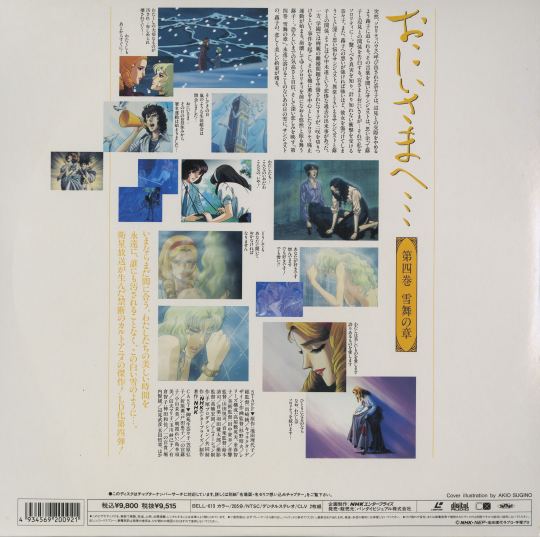
Volume Four Subheading
It’s not too late yet, our beautiful time can still last forever, unspoiled by anyone, just like this white snow… A forbidden cult anime masterpiece born from satellite broadcasting! The fourth installment on LD!
Volume Four Synopsis
Suddenly summoned to the sorority house, Nanako is pressured by Fukiko to end her relationship with Hemmi. Hearing this, Sanjust is compelled to confess his relationship with Fukiko. The shocking truth makes Nanako reel in disbelief. He deeply ponders that the stronger his feelings for Fukiko, the more he ends up hurting her. The unusual relationship between Sanjust and Fukiko reveals a tragic past of a failed double suicide. Meanwhile, in the school, an incident occurs where Mariko, slandered for her parents’ divorce, attacks Misaki, leading to an anti-sorority movement centered around Kaoru. Fukiko still acts nonchalantly in front of the crumbling sorority. The volume unfolds displaying Fukiko’s terrifying yet noble confidence and deep sorrow. A beautiful yet sad promise lingers in the snow that never melts.

Volume Four’s “From the staff to all the fans”
Bio:
Kenichiro Haneda
Born on January 12, 1949. Graduated from Toho Gakuen College of Music in the Piano Department.
An accomplished concert pianist, Kenichiro Haneda has a broad range of experience, including composing and performing music for movies and TV themes, as well as acting as a musical director for musicals and commercials. He has worked on numerous soundtracks such as NHK’s morning drama “Youth Family,” TBS’s “Women Work Hard” and “Life Is Full of Demons.” With his genre-defying approach to music and his bright, humorous personality, he is a sought-after multi-artist in various fields.
The letter:
I’ve worked quite a bit with Music Director Seiji Suzuki in the past. Suzuki gives me the music menu, and I’m the one who creates it. We’ve had some pretty detailed discussions about it. Of course, I’ve read the original work as well. When I read it at home, my daughter gives me a puzzled look, as if to say my interests have changed quite a bit (laughs).
I think I wrote around 40 songs in total. The music is meant to have a Baroque sound while also feeling contemporary. The order was for something classical yet with a pop atmosphere. The image that immediately came to my mind was a rhythm section, with a harpsichord playing the melody. String instruments intricately marking the rhythm, much like Vivaldi’s Four Seasons. And on top of that, a flugelhorn playing the melody…
Regarding the scenes where the piano is played, I played all of it myself. I often compose and perform my own pieces. It’s less about talent and more like playing two roles; maybe I contribute quite a bit to cost-saving (laughs). In any case, this work has a unique atmosphere. If the music I created successfully captures that, then I must again express my gratitude to Suzuki for coordinating everything.
October 28, 1993, aired on NHK
Volume Four’s “Letter to Dear Brother”
Bio:
Hideaki Anno
Born on May 22, 1960. Originally from Ube, Yamaguchi Prefecture. Height is 180 cm; weight is a secret.
Debuted as an animator during his time at Osaka University of Arts, working on the TV version of “Macross.” Later worked on “Nausicaä of the Valley of the Wind,” the film version of “Macross,” “Royal Space Force,” and others, before directing “Gunbuster” and “Nadia: The Secret of Blue Water.” Currently planning new projects.
The letter:

Way to go!! Oniisama e…
Wow!! The long-awaited, tumultuous Volume 4!! This volume shows us the peak of the series, from Mariko-san’s stabbing incident to the dissolution of the sorority. Amazing, this is really amazing!! Yes.
Especially the heartbreaking breakdown of Nobuo’s family, and the portrayal of the sorority’s downfall reminiscent of the French Revolution, are things that are indescribable with words. Yes.
The highlights this time are–
Brilliant! Highly sophisticated direction and high-quality animation in Episode 27!
Tear-jerking! In Episode 28, Mr. Nobuo Hikawa’s soul-stirring outcry!! Upon hearing those lines, my tears really wouldn’t stop. Seriously. Amazing!!
Oh, so moving! The heartfelt words of Miya-sama at the end of Episode 32. The sight of Miya-sama waiting alone in the Sorority House and those lines really hit me hard.
Moreover, as always–
Incredible!! The world that reminds me of ‘Aim for the Ace!’ and ‘The Rose of Versailles’!!
Impressive!! The drama unfolds only in limited settings, like homes, trains, buses, crossings, schools, and other familiar places!!
Very Sophisticated!! The direction, composed of stillness and motion, light and black, feels so mature. As expected, Dezaki-san!
And, Powerful!! Nanako-san is turning into an adult right before our eyes.
Moreover, the music is also great!! I wish the BGM CD would come out soon. The use of chimes and telephones remains clever as ever!! Ah, the only thing missing is a bit more on the background elements…
by H. ANO ‘93 10/27
The tiger is saying “It’s awesome, isn’t it!”
Written above the drawings of Mariko and Saint-Just: “These two are definitely the ones. Yes.”
Volume Five
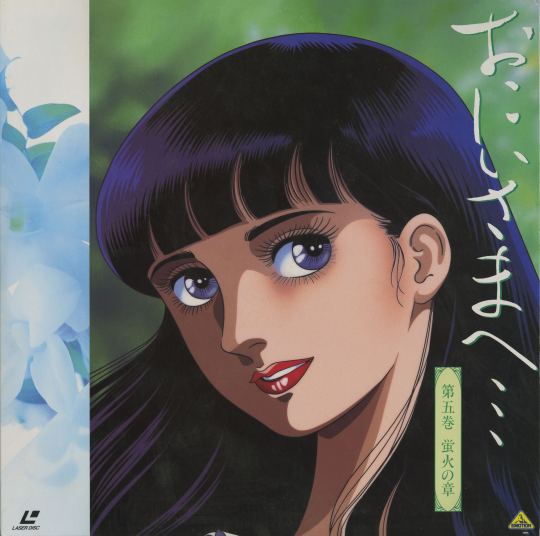
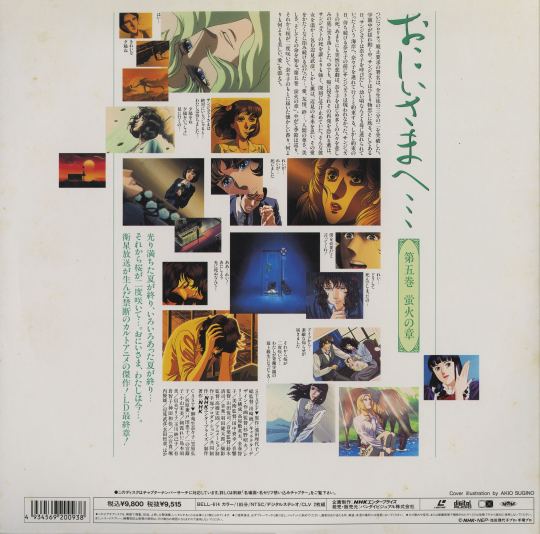
Volume Five Subheading
The summer full of light ends, the eventful summer ends… And then the cherry blossoms bloom again… Brother, I am now… A satellite broadcast-born forbidden cult anime masterpiece! The final chapter on LD!
Volume Five Synopsis
Finally, the petition to abolish the sorority has garnered signatures from over two-thirds of all students. As the campus is in a state of upheaval, Saint-Just is lost in thought alone. One day, he calls Nanako out and promises to take her to the beach where he used to go often with his mother when he was younger. However, on the promised day, Saint-Just never shows up. His sudden death plunges many people, including Nanako, into the depths of sorrow. Among them, Kaoru, who is battling cancer and fearful of its recurrence, takes the news of Saint-Just’s death most seriously. She finds comfort in the warmth of Takahiko Henmi, but continues to stubbornly refuse his love, thinking about his future. Love, friendship, bonds… The fifth volume, titled “Chapter of the Fireflies,” explores the dignity, beauty, and value of human life. Seasons turn, and the cherry blossoms bloom again, bringing back familiar scents to Nanako. All of this is accompanied by the most beautiful “love.”

Volume Five’s “From the staff to all the fans”
Bio:
Riyoko Ikeda
Born December 18, Showa 22 (1947). Native of Osaka City. Blood type AB. Graduated from Tokyo Metropolitan Hakutsuru High School and went on to the Philosophy department at Tokyo University of Education (now Tsukuba University). Began drawing manga during her time in school and debuted with “The Girl in the Rose Mansion.”
In 1972, she achieved great success with “The Rose of Versailles,” acquiring a broad fan base that transcended the realm of girls’ manga. Known for her keen historical perspective and deep insight into human nature. Active as a writer and essayist as well.
Her hobbies include Nihon buyo (Japanese traditional dance), oil painting, movie appreciation, vocal music, piano, cooking, and knitting. Her work has been selected for the 76th Nika Exhibition.
Major works: “The Rose of Versailles,” “Window of Orpheus,” “Empress Catherine,” “To My Brother,” “At the Ends of the Sky,” “The Blue Pomegranate,” “My Manga”
Books: “If Only Life Could Be Lived Once,” “Women of the French Revolution,” “Women Who Wrote Masterpieces”
Currently writing “Eroica” and “Prince Shotoku.”
The letter:
As one who has journeyed far from that radiant chapter called youth, a time that shone with an almost awkward brilliance, I find myself in a peculiar blend of bewilderment and nostalgia. Seeing my old ideas of high school life come to life as animation almost 20 years later is surreal, to say the least.
Still, it’s exciting: hearing voices given to these characters, seeing them talk, laugh, and get angry. Watching them come alive is truly a thrilling and satisfying experience.
Ah, adolescence — everyone’s inescapable stairway to adulthood. Some people take each step slowly and carefully, while others rush ahead, ending up out of breath or even lost. And then, there are those who may lose their direction, standing still, contemplating each step. Wrapped in the love of family, meeting various people, nurturing friendships, experiencing love, and going through the ups and downs of hurt and forgiveness — it would be wonderful to climb those steps in such a way.
Volume Five’s “Letter to Dear Brother”
Bio:
Rumiko Takahashi
Born in Niigata Prefecture.
Debuted in 1978 with “Katte na Yatsura,” submitted while still in college, in Shonen Sunday.
Famous works include “Urusei Yatsura,” “Maison Ikkoku,” and others.
Currently serializing “Ranma 1/2” in Shonen Sunday.
The letter:
A masterpiece infused with the creator’s soul.
When I heard from the staff that “Oniisama e…” was getting the anime treatment on satellite TV, I was surprised. I’d delved into the original comic before and it’s quite an eccentric story. “How are they going to pull this off?” I thought. But learning that the script was in the capable hands of my acquaintance Tomoko Konparu, I was very excited.
In fact, the anime that aired was genuinely captivating. The characters are so larger-than-life that they electrify the screen the moment they step into frame. It’s been a long time since an anime had that kind of presence.
I believe the animation is done by the same people who worked on “Tomorrow’s Joe 2.” The scenes are so visceral that you can almost feel the punches land and see the fighters hit the mat. I kept asking myself, “Why isn”t a mouthpiece flying out?” (laughs)
My favorite character in the work is Nobuo Mariko. The scenes where she bites her lip until it turns a flushed red, I find it really cute.
But what blew me away was the show’s emotional intelligence. Just when the heroine seems on the brink of breaking, a lifeline is thrown her way. This nuanced touch prevents the darker, more harrowing elements from overwhelming the viewer. It’s as if you can feel the sincerity of the creator throughout the piece.
And that’s it. Again, check out the full scans on Archive.org, and remember to encourage all your friends to experience this beautiful anime!
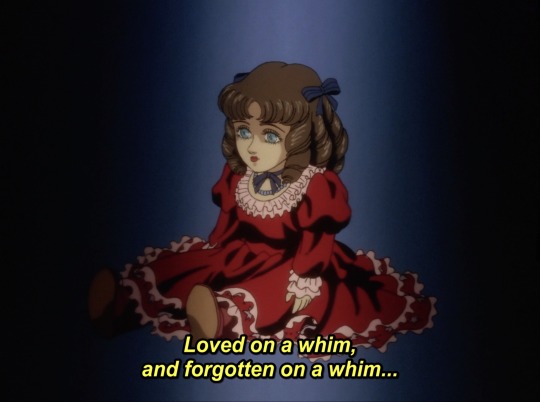
135 notes
·
View notes
Text




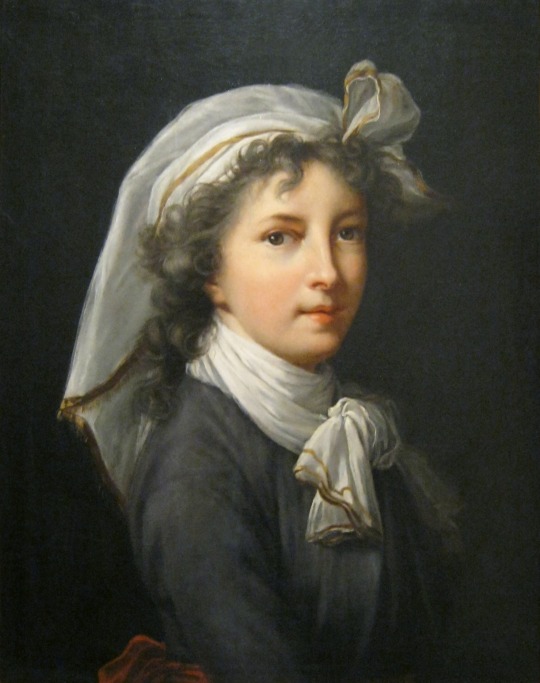

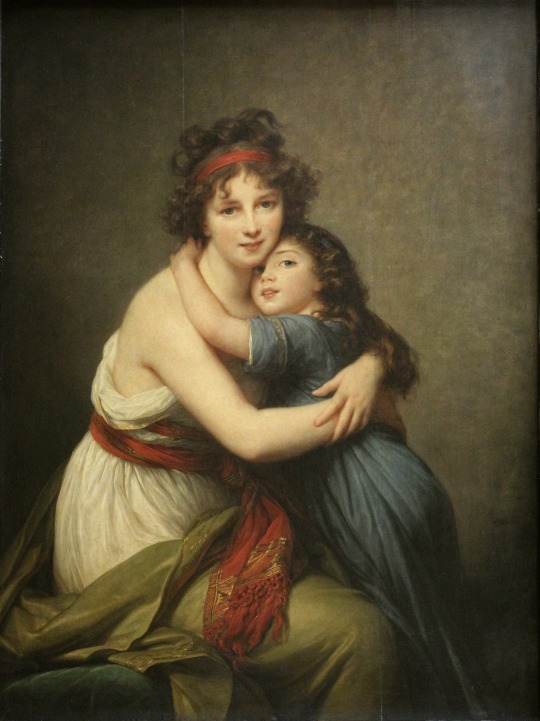
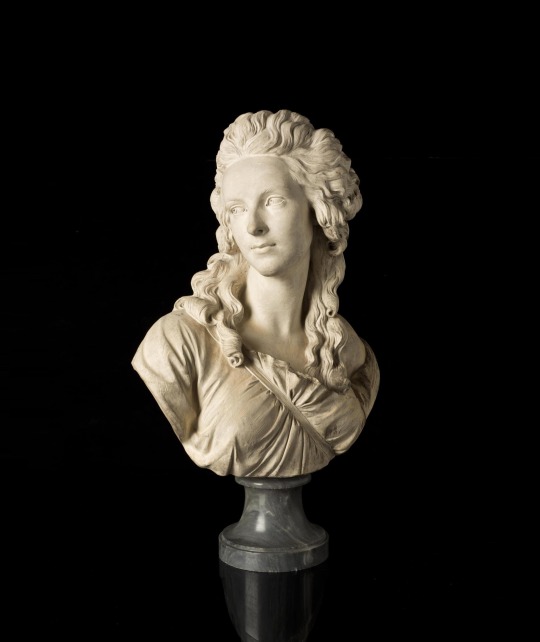
Élisabeth Vigée Le Brun (1755-1842).
18th and 19th-century French painter.
.
She was a prominent French portrait painter of the late 18th century and one of the most successful women artists (unusually so for her time), particularly noted for her portraits of women.
.
Her artistic style is generally considered part of the aftermath of Rococo with elements of an adopted Neoclassical style. Her subject matter and color palette can be classified as Rococo, but her style is aligned with the emergence of Neoclassicism. Vigée Le Brun created a name for herself in Ancien Régime society by serving as the portrait painter to Marie Antoinette. She enjoyed the patronage of European aristocrats, actors, and writers, and was elected to art academies in ten cities.
.
Vigée Le Brun created some 660 portraits and 200 landscapes. In addition to many works in private collections, her paintings are owned by major museums, such as the Louvre, Hermitage Museum, National Gallery in London, Metropolitan Museum of Art in New York, and many other collections in continental Europe and the United States.
.
Her father and first teacher, Louis Vigée, was a noted portraitist who worked chiefly in pastels. By the time she was in her early teens, Élisabeth was painting portraits professionally. In 1776 she married an art dealer, Jean-Baptiste-Pierre Lebrun. Vigée Le Brun began exhibiting her work at their home in Paris, the Hôtel de Lubert, and the Salons she held here supplied her with many new and important contacts. Her husband's great-great-uncle was Charles Le Brun, the first director of the French Academy under Louis XIV.
.
Her great opportunity came in 1779 when she was summoned to Versailles to paint a portrait of Queen Marie-Antoinette. The two women became friends, and in subsequent years Vigée-Lebrun painted more than 20 portraits of Marie-Antoinette in a great variety of poses and costumes.
In 1783, Vigée Le Brun was received as a member of the Académie royale de peinture et de sculpture. She was one of only 15 women to be granted full membership in the Académie between 1648 and 1793. Her rival, Adélaïde Labille-Guiard, was admitted on the same day. Vigée Le Brun was initially refused on the grounds that her husband was an art dealer, but eventually the Académie was overruled by an order from Louis XVI because Marie Antoinette put considerable pressure on her husband on behalf of her portraitist.
.
In October 1789, after the arrest of the royal family during the French Revolution, Vigée Le Brun fled France with her young daughter, Julie. Her husband, who remained in Paris, claimed that Vigée Le Brun went to Italy "to instruct and improve herself", but she certainly feared for her own safety. In her 12-year absence from France, she lived and worked in Italy (1789–92), Austria (1792–95), Russia (1795–1801), and Germany (1801). She finally went back to France in 1802 but kept traveling.
She lost eyesight due to various strokes and endend up poor.
.
Famous paintings:
Self Portrait in a Straw Hat
Marie-Antoinette with a Rose
Marie-Antoinette and her Children
Self Portrait with Daughter
Portrait of Emma, Lady Hamilton, as Bacchante
#Élisabeth vigée le brun#Vigée le brun#Painter#18th century#19th century#french history#women history#women in history#History#marie antoinette#history crush#history hottie#history nerd#history geek#history lover#historical crush#historical babes#historical hottie#historical figure#historical
208 notes
·
View notes
Photo

On June 21st 1813 William Edmondstoune Aytoun the noted lawyer and poet, author was born in Edinburgh.
Aytoun was a Fellow of the Royal Society of Edinburgh. He is often referred to as ‘the first modern professor of English literature’. His father was a member of a long-established private society of Scottish solicitors known as the Society of Writers to Her Majesty’s Signet, which dates back to 1594! Aytoun was a pupil at Edinburgh Academy from the age of 11, before going onto Edinburgh University.
Encouraged by his father he then went on to study law in London but quickly gave it up and travelled in Europe before returning to Edinburgh to take a place in chambers with his father. Although he was a successful solicitor it was literature that was his first love, this was instilled in him by his mother, who had strong political views, and an admiration of The Jacobite and Stuart dynasty.
Aytoun was a regular contributor to the famed Edinburgh literary periodical Blackwood’s Magazine, he was a humorist writer of prose stories but his Jacobite influences were also evident with such works as, Charles Edward At Versailles, Widow of Glencoe, The Burial March Of Dundee and his most famous work, The Lays of the Scottish Cavaliers.
A favourite wee quote from W E Aytoun is “Give me but one hour of Scotland, Let me see it ere I die.”
Here are the final three verses of The Execution of Montrose, a poem that tells the sad tale of the hanging of a brave Scottish nobleman, you can find the full verse on Poemhunter:
He mounted up the scaffold,
And he turn’d him to the crowd;
But they dar’d not trust the people,
So he might not speak aloud.
But he look’d upon the heavens,
And they were clear and blue,
And in the liquid ether
The eye of God shone through;
Yet a black and murky battlement
Lay resting on the hill,
As though the thunder slept within—
All else was clam and still.
The grim Geneva ministers
With anxious scowl drew near,
As you have seen the ravens flock
Around the dying deer.
He would not deign them word nor sign,
But alone he bent the knee,
And veil’d his face for Christ’s dear grace
Beneath the gallows-tree.
Then radiant and serene he rose,
And cast his cloak away:
For he had ta’en his latest look
Of earth and sun and day.
A beam of light fell o’er him,
Like a glory round the shriven,
And he climb’d the lofty ladder
As it were the path to heaven.
Then came a flash from out the cloud,
And a stunning thunder-roll;
And no man dar’d to look aloft,
For fear was on every soul.
There was another heavy sound,
A hush and then a groan;
And darkness swept across the sky—
The work of death was done!
The pic shows a bust of W E Aytoun in the National Portrait Gallery.
7 notes
·
View notes
Text
Idea Factory Announces Several Otome Games for Switch
Idea Factory Announces Several Otome Games for Switch
Idea Factory have announced in this week’s Weekly Famitsu that they will be shifting the focus of their otome game lineup to Nintendo Switch starting from September 2018 and have announced several new titles both original and ports. Let’s go through the announcements.
First up is a port of Hakuoki Shinkai: Fuukaden, which originally released on the PS4 last year. It is a double pack release that…
View On WordPress
#amnesia Memories#Birushana Senki ~ Genpeiden#Cendrillion palikA#Code: Realize ~Bouquet of Rainbows~#Hakuoki#Hakuoki new title#hakuoki shinkai: fuukaden#Idea Factory#LoverPretend#Nil Admirai no Tenbin: Irodori Nadeshiko#nintendo switch#Norn9#Otomate#otome game#Reine des Fleurs#Sengoku Night Blood#Versailles Rose Private Academy
0 notes
Text
Otomate will begin putting their games on the Nintendo Switch

Google Translate Translation (take with a grain of salt):
Works of the idea factory group's women's brand "Otomate" are released one after another at Nintendo Switch. It was also revealed that three titles of "Code: Realize ~ Bouquet of Azalea ~", "Cendrillon palik A" and "Balance of Nir · Admiraly" will be released following the "Hakuoki Shinko Fudoku Koden" .
"Code: Realize ~ Bouquet of Ai rain ~" will be released on September 13, the price is 6,800 yen for the regular version / 8,800 yen for the limited edition. "Cendrillon palik A" and "Balance of Nir · Admirari Balance Dorikiko" are both planned to be released in 2018, and both prices are 6,800 yen for the regular version and 8,800 yen for the limited edition
Source
We announced that the Nintendo Switch version "Hakuoki Shinko Funka Kaiden" will be released on September 6, but it became clear that a complete new work of "Hakuoki" series is also being prepared.
In addition, it is also possible to use one of Joe D's new work "LoverPretend" (keyword: love affair, selection, effort, ideal, growth, actor, reality, dream, setback, companion) and " We are also preparing works such as "Translation" (Character Design: Mr. Koji Haneda), "Cartoon" Rose of Versailles "as an Academy Item," Private Belle Barra School "(Imaging at the same time)," War Night Blood ". Furthermore, "Amnesia" "Norn + net" "Lendfleur" is also planned to be transplanted.
Source
I don’t think that it means they will abandon the PS Vita, it is still a popular console in Japan and Otomate has seen many sales of their western localizations of the games on the Vita, I think they just want to broaden their potential audience, just like how they had iPhone versions of Amnesia and Hakuouki.
8 notes
·
View notes
Link
News - A new project entitled Private BeruBara Academy: Rose of Versailles Re*imagination has been announced in Japan that has 2 parts. The first is a gamed based on Rose of Versailles that takes the classic characters & puts them in a private school setting. The second is the announcement of a “screen adaptation” of this project (though no specification if it’s live-action or anime). There’s a teaser video here!
43 notes
·
View notes
Text
Awesome Possum 5
Time for another Awesome Possum!
Awesome Possum posts consist of random internet finds. Any blog posts, articles, videos, podcasts, anything under the sun will be included here. To be clear, this won’t only include games or manga. It will be anything and everything. Some posts may not be necessarily posted this week, but I’ve only discovered about them this week.
So let’s get started. 😊
(more…)
View On WordPress
#absolute boyfriend#Aggretsuko#Celine Dion#Electronic Arts#Fata Morgana no Yashiki#games#Hello Counselor#James Corden Carpool#Jang Beom June#KAT-TUN#Mobile Game#Mr. Love Queen’s Choice#Netflix#Nintendo Switch#PlayStation 4#Private Academy Verrose ~The Rose of Versailles Re*Imagination~#PS Vita#PS4#RPG#Sims 4#Splatoon 2#Super Junior#Taguchi Junnosuke#The House in Fata Morgana#The Return of Superman#Video Games#visual novel game#Watase Yuu#Ys IX: Monstrum Nox#Ys Series
0 notes
Text
Hyperallergic: Art Movements
George Stubbs, “Two Hacks” (1789), oil painting on panel, 21 1/2 x 29 in (courtesy The Parker Gallery)
Art Movements is a weekly collection of news, developments, and stirrings in the art world.
As anticipated, President Trump’s proposed 2018 federal budget calls for the complete elimination of the National Endowments for the Arts and Humanities (NEA and NEH). The budget also proposes the elimination of the Corporation for Public Broadcasting, the Woodrow Wilson International Center for Scholars, and the Institute of Museum and Library Services. The College Art Association published an “Arts and Humanities Advocacy Toolkit” in response to the anticipated budget earlier this month.
LD50 Gallery, the London art space accused of supporting a racist, far-right agenda, has been evicted from its premises according to a statement by the Shut Down LD50 Campaign.
The Western Cape High Court found Zwelethu Mthethwa guilty of the murder of sex worker Nokuphila Kumalo. The artist is to be sentenced on March 29.
Art dealer Archie Parker plans to sell “Two Hacks,” a painting recently attributed to George Stubbs at the British Antique Dealers Association fair in London. The work, which was thought to be a copy after the artist, was deaccessioned by the Huntington Library in San Marino, California. In a blog post, art historian Bendor Grosvenor described its sale as “one of the biggest deaccessioning blunders of modern times.” Parker purchased the work at Christie’s for a hammer price of $175,000.
Olafur Eliasson, “Little Sun Diamond” (2017)
Olafur Eliasson unveiled a new solar-powered mini lamp named the “Little Sun Diamond.” It is the third design created by Eliasson for people without access to reliable energy.
The Australian Department of Treasury launched an investigation into security firm Building Risks International Pty. Limited following accusations that it underpaid guards at the National Gallery of Victoria.
Utah’s House and Senate voted to designate Robert Smithson’s “Spiral Jetty” and ancient rock art as official state works of art.
Austrian investigators recovered 67 paintings, including works by Oskar Kokoschka and Koloman Moser, that were stolen from a private collection in Vienna-Hietzing in 2014.
A discovery by the Art Loss Register led to the recovery of eight paintings stolen from a home in Denmark in 2000.
Tunisian authorities arrested a group of suspects in connection with the attempted smuggling of a 15th-century, 121-foot Torah scroll.
The Italian group 100% Animalisti dumped 88 pounds of animal excrement outside Venice’s Palazzo Grassi in protest over an upcoming exhibition by Damien Hirst. On its website, the group described the exhibition as “an insult to a city of art, of REAL art.”
German police raided Julian Charrière‘s studio after learning that he possessed a cannon. The artist built the air cannon, which is designed to shoot a single coconut, for the Antarctic Biennale.
Catherine Pégard, the director of Versailles‘s contemporary art program, announced that the palace will host a group show in the fall as opposed to exhibiting the work of a single artist.
ShowGrow, a gallery space and cannabis dispensary, opened in Los Angeles.
Transactions
Antonio Lopez, “Missoni” (1984), watercolor, gouache and pencil on paper, 20 x 15 in (courtesy the Estate of Antonio Lopez and Juan Ramos)
El Museo del Barrio acquired 47 works from the Estate of Antonio Lopez and Juan Ramos.
Eleanor “Ellie” Cheney donated a painting by Anna Mary Robertson Moses (aka ‘Grandma Moses’) to the Rutgers–Camden Center for the Arts.
The German government allocated €3.4 million (~$3.6 million) towards provenance research in response to the ongoing controversy over Cornelius Gurlitt’s art collection.
The LUMA Foundation acquired the archives of Annie Leibovitz.
The Victoria & Albert Museum acquired a Pussyhat worn at the Women’s March in Washington, DC, on January 21 as part of its Rapid Response Collection.
(courtesy Victoria & Albert Museum)
Transitions
Wendy Fisher was elected to succeed Jennifer Blei Stockman as president of the Solomon R. Guggenheim Foundation’s board of trustees.
Hendrikje Crebolder was appointed to the Rijksmuseum’s board of directors.
Patrick Moore was appointed director of the Andy Warhol Museum.
Georgina Jackson was appointed director of the Douglas Hyde Gallery in Ireland.
Claudia Dillmann will step down as director of Frankfurt’s Deutsche Filmmuseum in September.
Chad Alligood was appointed chief curator of American art at the Huntington Library, Art Collections, and Botanical Gardens.
Ghislain d’Humières stepped down as CEO of the Speed Art Museum.
Brooke Davis Anderson stepped down as executive director of Prospect New Orleans and will take up the directorship of the Pennsylvania Academy of Fine Arts.
Miety Heiden was appointed deputy chairman and head of private sales at Phillips.
Sotheby’s opened a new gallery and office in Dubai.
The UK’s National Trust opened a new conservation studio at Knole House in Kent.
The estate of artist and art dealer Betty Parsons is now represented by Alexander Gray Associates.
Sandra Gering Inc. will close at the end of July. The gallery first opened in Soho in 1991.
Manhattan art supply store A.I. Friedman will close on April 30.
The Dog Museum of America plans to relocate to New York City within a year.
The Museum of Contemporary Art Chicago named its restaurant ‘Marisol’ after the late sculptor Marisol Escobar.
Accolades
Gala Porras-Kim, “For Learning Zapotec Verbs” (2012), wood, pencil, paper, wire, found rocks, 50 x 37.5 x 2.5 in (courtesy Artadia)
Kahlil Joseph and Gala Porras-Kim received the 2017 Los Angeles Artadia Award.
The Sharjah Biennial Prize was awarded to Dineo Seshee Bopape, İnci Eviner, Uriel Orlow, and Walid Siti. An additional prize was awarded to the late Ali Jabri and is dedicated to the conservation of his work.
Dineo Seshee Bopape also won the 2017 Future Generation Art Prize.
Jennie C. Jones received the Rose Art Museum’s 2017 Ruth Ann and Nathan Perlmutter Artist-in-Residence Award.
Obituaries
Fiora Corradetti Contino (1925–2017), opera maestra.
Henri Cueco (1929–2017), painter and writer.
Christopher Gray (1950–2017), architecture writer and researcher.
Alf Lechner (1925–2017), sculptor.
Marian Lindkvist (1919–2017), drama and movement therapist.
Tommy LiPuma (1936–2017), record producer and music executive.
Jay Lynch (1945–2017), artist, writer, and satirist. Key figure of the underground comics scene during the 1960s and ’70s.
Kurt Moll (1938–2017), bass singer.
Amy Krouse Rosenthal (1965–2017), children’s author and filmmaker.
Joni Sledge (1956–2017), singer and songwriter. Member of Sister Sledge.
Geoff Wainwright (1937–2017), archaeologist.
Robert James Waller (1939–2017), writer. Author of The Bridges of Madison County (1992).
Jay Lynch (Jay Lynch Collection, courtesy the Ohio State University Billy Ireland Cartoon Library & Museum)
The post Art Movements appeared first on Hyperallergic.
from Hyperallergic http://ift.tt/2m9lsGF
via IFTTT
1 note
·
View note
Text
Love Songs Abound on Rose of Versailles Dating Sim Soundtrack
Love Songs Abound on Rose of Versailles Dating Sim Soundtrack
Rose of Versailles lives on — sort of — as a new visual novel, and the accompanying soundtrack will feature new romantic tunes and a ton of bonuses.
Berubara Private Academy ~Rose of Versailles Re*imagination~ casts the player as Yamada Oscar, a girl whose mother is a huge Rose of Versailles fan and named her after the show’s legendary heroine. When Oscar enters the prestigious Berubara…
View On WordPress
0 notes
Text
Love Songs Abound on Rose of Versailles Dating Sim Soundtrack
Rose of Versailles lives on — sort of — as a new visual novel, and the accompanying soundtrack will feature new romantic tunes and a ton of bonuses.
Berubara Private Academy ~Rose of Versailles Re*imagination~ casts the player as Yamada Oscar, a girl whose mother is a huge Rose of Versailles fan and named her after the show's legendary heroine. When Oscar enters the prestigious Berubara Private Academy, she discovers there's another Oscar there: Maki Nozomi, whose resemblance to the original Oscar earned her the nickname.
The shoujo romance features more series analogues. Oscar's love André appears as childhood friend Ando Reiji, Marie Antoinette becomes school beauty Arisugawa Mari, and Swedish aristocrat Hans Axel von Fersen becomes exchange student Hatori Y Axel.
Musical duo ACRYLICSTAB performs the opening for the game, titled "Mikansei ACTOR." The pair previously performed on the soundtrack for PS3 game Ateleir Escha & Logy: Alchemists of the Dusk Sky. Children of the Whales OP singer RIRIKO provides the ending theme, "Ring a Bell."
The Berubara Private Academy soundtrack will feature full-length cuts of both songs, instrumental tracks for both, and 24 BGM tracks. Standard editions of the soundtrack will come with a bromide, while limited editions will be packaged with two heart-shaped pinback buttons. Limited editions purchased via Animate will also include a clear file.
Berubara Private Academy ~Rose of Versailles Re*imagination~ goes on sale May 23, and the soundtrack will be released on June 26.
>> Berubara Private Academy Website
Source: Comic Natalie
-----
Kara Dennison is a writer, editor, and interviewer with bylines at VRV, We Are Cult, Fanbyte, and many more. She is also the co-founder of Altrix Books and co-creator of the OEL light novel series Owl's Flower. Kara blogs at karadennison.com and tweets @RubyCosmos.
0 notes
Photo
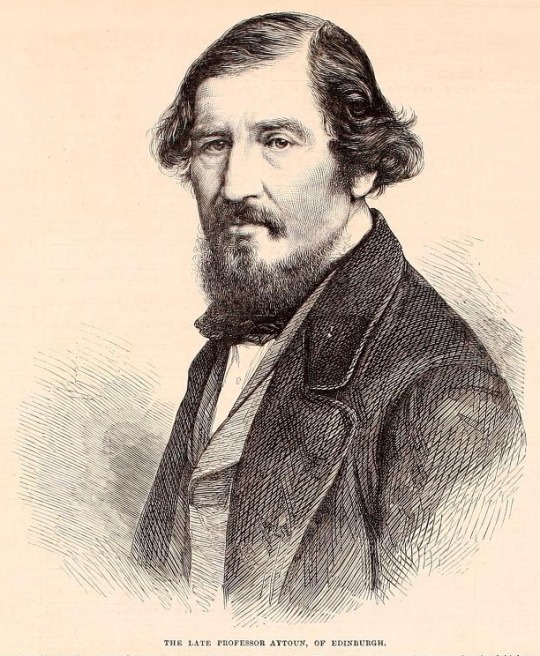
June 21st 1813 saw the birth of William Edmondstoune Aytoun in Edinburgh.
William Edmondstoune poet, translator and lawyer was a Fellow of the Royal Society of Edinburgh. He is often referred to as ‘the first modern professor of English literature’. His father was a member of a long-established private society of Scottish solicitors known as the Society of Writers to Her Majesty’s Signet, which dates back to 1594!
Aytoun was a pupil at Edinburgh Academy from the age of 11, before going onto Edinburgh University. Encouraged by his father he then went on to study law in London but quickly gave it up and travelled in Europe before returning to Edinburgh to take a place in chambers with his father.
Although he was a successful solicitor it was literature that was his first love, this was instilled in him by his mother, who had strong political views, and an admiration of The Jacobite and Stuart dynasty. Aytoun was a regular contributor to the famed Edinburgh literary periodical Blackwood's Magazine, he was a humorist writer of prose stories but his Jacobite influences were also evident with such works as, Charles Edward At Versailles, Widow of Glencoe, The Burial March Of Dundee and his most famous work, The Lays of the Scottish Cavaliers.
My favourite quote by Aytoun came from the later......"“Give me but one hour of Scotland, Let me see it ere I die.”
I've posted a few things about James Graham, Marquess of Montrose and I found this poem by Aytoun, it is called The Execution Of Montrose, as with most of his work it is quite a long poem, so here are the last three verses......
He mounted up the scaffold,
And he turn’d him to the crowd;
But they dar’d not trust the people,
So he might not speak aloud.
But he look’d upon the heavens,
And they were clear and blue,
And in the liquid ether
The eye of God shone through;
Yet a black and murky battlement
Lay resting on the hill,
As though the thunder slept within—
All else was clam and still.
The grim Geneva ministers
With anxious scowl drew near,
As you have seen the ravens flock
Around the dying deer.
He would not deign them word nor sign,
But alone he bent the knee,
And veil’d his face for Christ’s dear grace
Beneath the gallows-tree.
Then radiant and serene he rose,
And cast his cloak away:
For he had ta’en his latest look
Of earth and sun and day.
A beam of light fell o’er him,
Like a glory round the shriven,
And he climb’d the lofty ladder
As it were the path to heaven.
Then came a flash from out the cloud,
And a stunning thunder-roll;
And no man dar’d to look aloft,
For fear was on every soul.
There was another heavy sound,
A hush and then a groan;
And darkness swept across the sky—
The work of death was done!
You can read the whole poem here http://www.bartleby.com/246/100.html
7 notes
·
View notes